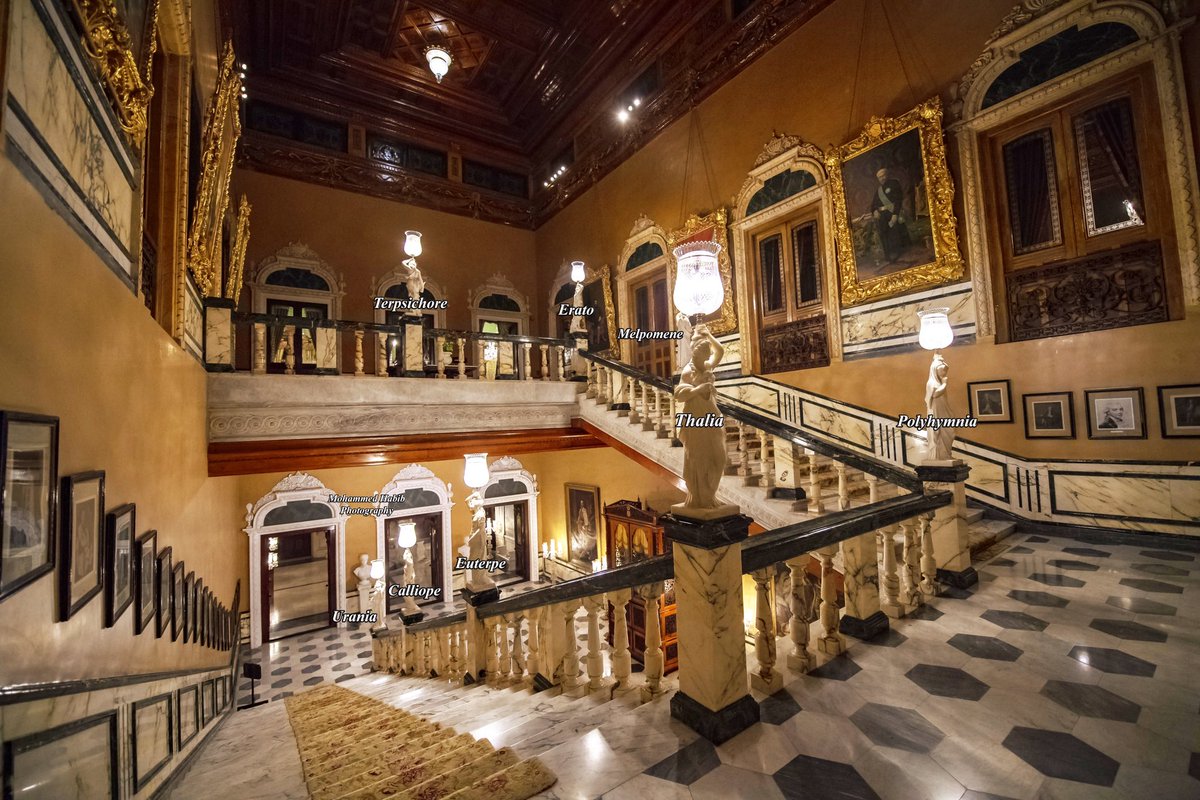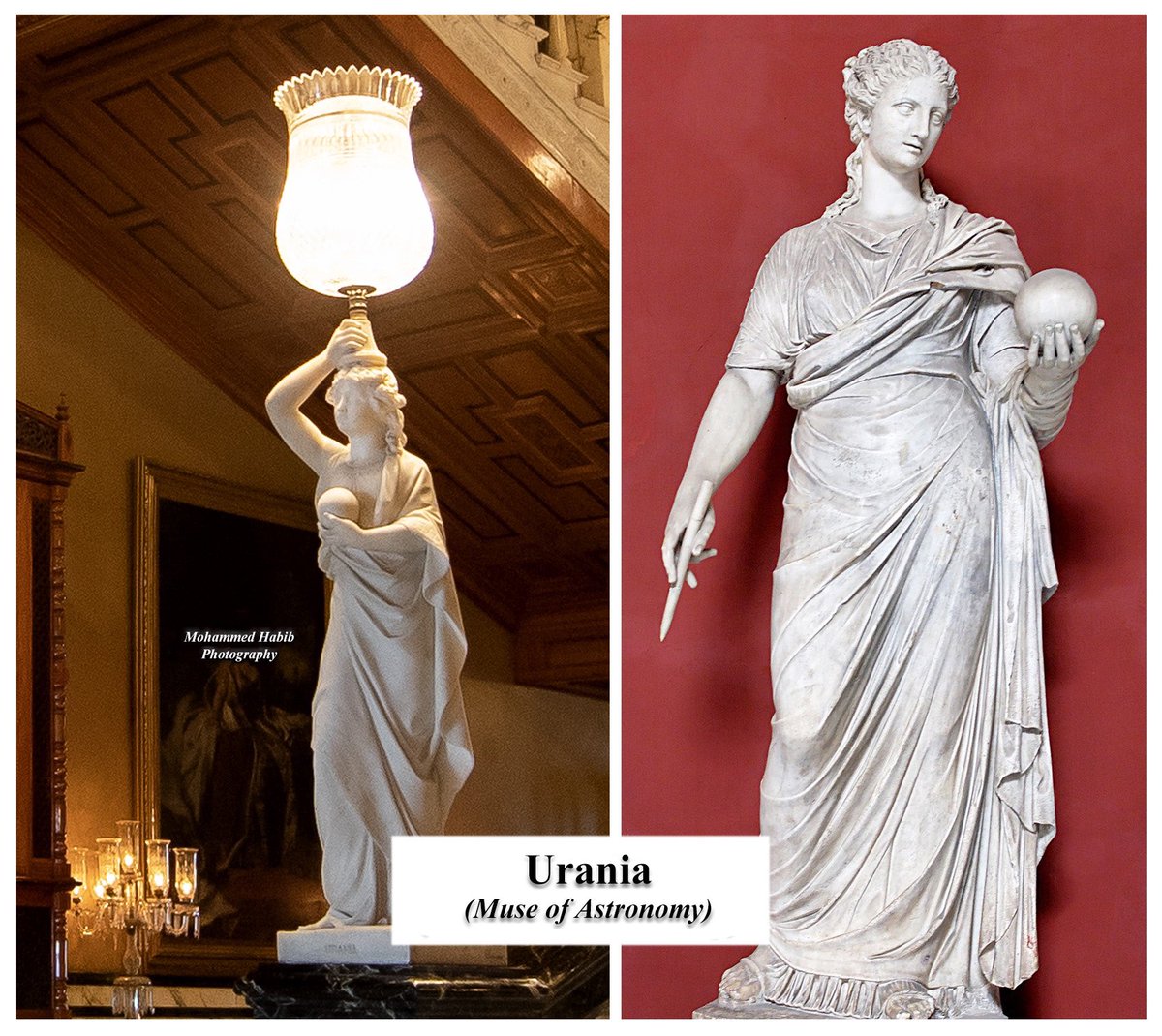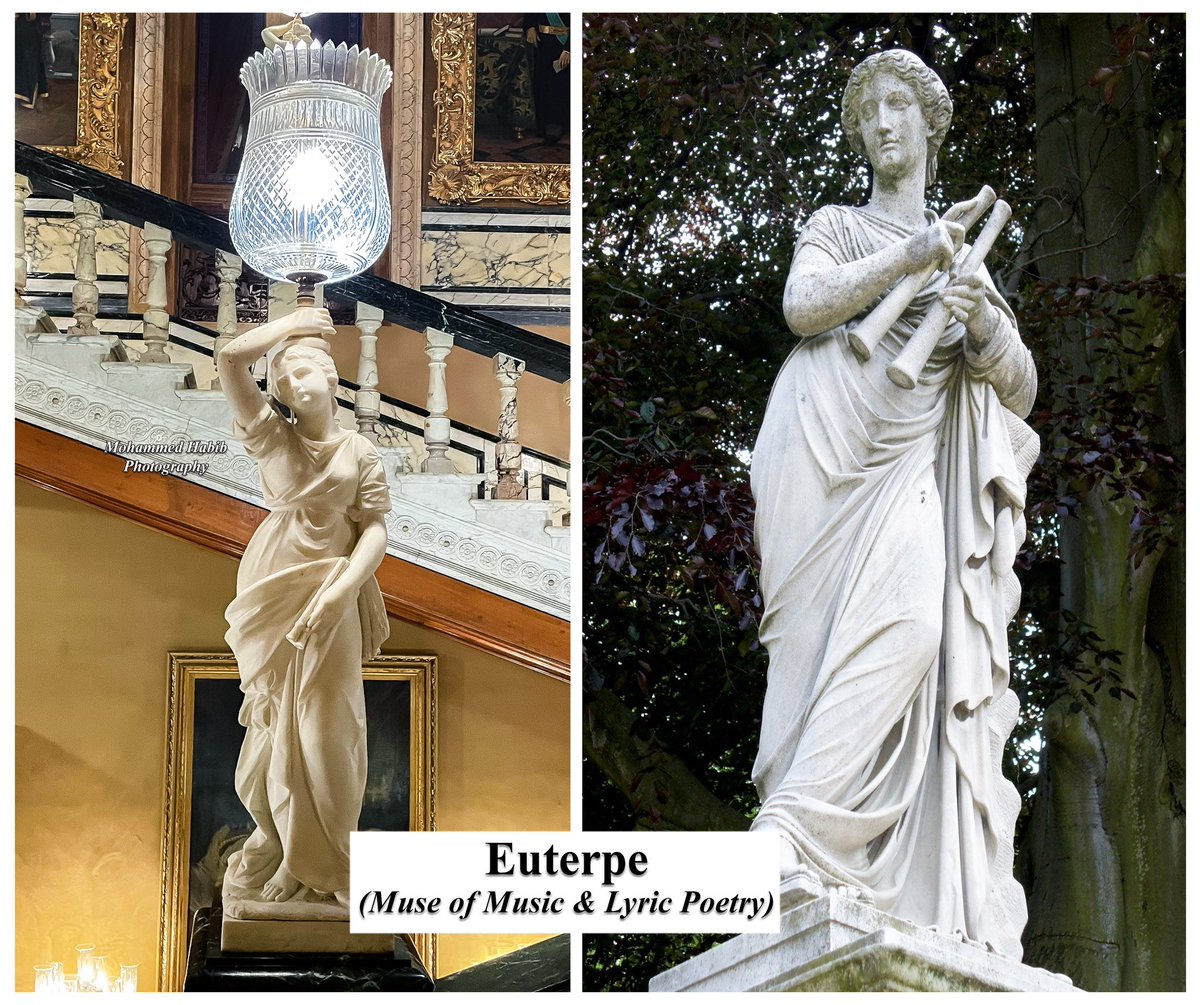Of all the Olympic deities, none occupy a more distinguished position than the ‘Muses’ also known as the ‘Mousai’. They were the 9 beautiful daughters of Titan Zeus & Titaness Mnemosyne. In Greek mythology, Zeus in the form of a mortal shepherd seduced Mnemosyne in the
1/*
1/*

Pieria region near Mount Olympus where they slept together for 9 consecutive nights & as a result Mnemosyne gave birth to 9 daughters who according to some sources were born in this order: Calliope, Clio, Melpomene, Euterpe, Erato, Terpsichore, Urania, Thalia & Polyhymnia.
2/*
2/*
These Muses were deemed to be a source of inspiration. They presided over arts & sciences, often helping & guiding people towards magnificent ideas & discoveries. Their beauty, lovely voice & dancing helped relieve the sorrows of the world.
3/*
3/*
Each of the muses ruled over a particular element of arts and sciences for her inspiration in the specific subject. It is from ‘Muse’ we get the word ‘Museum’ which is fittingly a place where creativity is gloriously displayed.
4/*
4/*
When #Paigah Amir Sir Viqar ul Umrah built #FalakNumaPalace, he placed the marble sculptures of 8 of the 9 muses on railing of the marble staircase. The sculpture of Clio (Muse of History) is missing & it remains a mystery why she was not included along with her sisters.
5/*
5/*
A famous story associated with Muse Clio is that she once reprimanded the Olympian goddess of love Aphrodite for her love of the young mortal Adonis. Clio somehow believed that Aphrodite’s love was unreasonable, so she made the mistake of telling the goddess.
6/*
6/*
This did not please Aphrodite, so as a punishment she cursed Clio to fall in love with Pierus who was the King of Emathia in Macedonia. King Pierus was famous for his 9 daughters, the Emathides or Pierides whom he named after the nine Muses.
7/*
7/*
These girls believed that their skills were a great match to the Muses and challenged them to a contest in which they suffered a defeat and were punished by the muses who turned into magpie birds.
8/*
8/*
‘Urania’ is the muse of astronomy and is depicted with a celestial globe in her hand as she has the ability to foretell the past and the future by the arrangement of the stars.
9/*
9/*

‘Calliope’ is the muse of eloquence and epic poetry. She is depicted with a writing tablet in her hand. Her name means ‘The one with the beautiful voice’.
10/*
10/*

‘Euterpe’ is the muse of music and lyric poetry and is depicted holding a double-piccolo in her hands. Her name means ‘Giver of many delights’.
11/*
11/*

‘Thalia’ is the muse of comedy and idyllic poetry and is portrayed holding a comic mask in her hand. Her name means ‘flourishing’ because the praises in her songs flourish through time.
12/*
12/*

‘Polyhymnia’ is the muse of sacred poetry, hymn, dance and eloquence. She is usually depicted as very serious, pensive and meditative often holding a finger to her chin.
13/*
13/*

‘Melpomene’ is the muse of tragedy and is often depicted with a tragic mask in one hand and a knife or club in the other hand. Her name means ‘Celebrate with song and dance’.
14/*
14/*

‘Erato’ is the muse of erotic and love poetry. She is usually depicted with a lyre and her name means ‘lovely’ or ‘desirable’.
15/*
15/*

‘Terpsichore’ is the muse of dance and her name means ‘Delight in Dancing’. She is usually depicted with a zither in her hands which is a small instrument similar to the lyre invented by Hermes.
16/*
16/*

‘Clio’ was muse of history & storytelling, meaning she was responsible for preserving history & all the knowledge that comes from discoveries & investigations of the past. She often held scrolls and stone tablets to pass on her stories. Her name means ‘to make famous’.
17/*
17/*

An observation in the old pictures of #FalakNuma staircase is that the Muses were facing inwards. Probably to look at every visitor from all sides who walked into the palace. ???
18/*

18/*


However, in this pictures taken by Jack Birns in 1948 & Andreas Volwahsen in 2004, the muses are facing in the opposite direction towards the stairs.
19/*

19/*


In this pic by Andreas Volwahsen in 2004 more sculptures are seen at #FalakNumaPalace which may have been shifted elsewhere. Did sculpture of Clio ever exist & if it did was it shifted elsewhere & why she was not kept along with her sisters on staircase remains a mystery.
20/20
20/20

• • •
Missing some Tweet in this thread? You can try to
force a refresh












